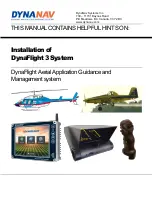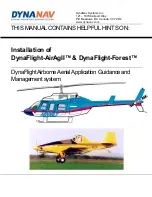
CHAPTER 4
REFERENCE GUIDE
EFD1000 E5 Pilot’s Guide
Page 4-3
091-00086-001 ( )
4.1.1. Attitude
The Aspen ADAHRS attitude solution uses inputs from its internal three-axis
accelerometers, rate gyros, and magnetometers, supplemented by ram and static air
pressure inputs from the aircraft pitot-static system. Failures or incorrect input from any
of these sensors (such as might occur if the pitot tube or static system become blocked)
will affect the attitude solution. The EFI is designed to be robust to such failures, either
by being tolerant to incorrect inputs, or by detecting and annunciating a degraded
attitude solution.
The Aspen ADAHRS includes a Cross-Check Monitor, which predicts the quality of the
attitude solution by performing a continuous, real-time statistical analysis of the various
parameters computed within the AHRS Kalman filter. When the predicted quality of
the attitude calculation drops below a certain threshold, CROSS CHECK ATTITUDE is
annunciated on the attitude indicator (
Figure 4-1
). The annunciation thresholds for
the CROSS CHECK ATTITUDE message were determined during company flight tests,
and strike a balance between minimizing nuisance annunciations (when the attitude
solution is fine) and failing to annunciate (when the attitude solution is significantly
reduced). This balance can occasionally result in momentary CROSS CHECK ATTITUDE
annunciations, especially during aggressive maneuvering, steep or high-G turns, abrupt
pitch changes, etc.
In such situations, these annunciations indicate that the statistical quality of the attitude
solution is less than nominal, and that the pilot should cross-check the AHRS against
alternate attitude indications. Should the annunciation persist, then degraded AHRS
performance is statistically more likely to be experienced. In other words, momentary
CROSS CHECK ATTITUDE annunciations indicate that the AHRS solution is working hard
enough that the AHRS quality measure has been reduced to something less than that
associated with normal, unaccelerated flight. This situation demands increased pilot
vigilance and cross-monitoring of other cockpit instrumentation.
Figure 4-1
Cross Check Attitude
Annunciation





































